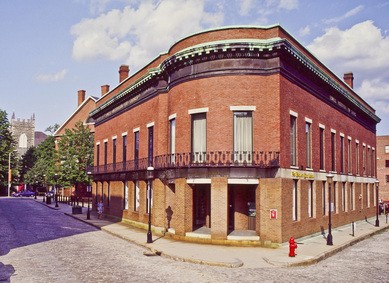New England Quilt Museum
Introduction
Text-to-speech Audio
Images
The New England Quilt Museum

Backstory and Context
Text-to-speech Audio
The New England Quilt Museum is an important counterpoint to the histories of industry and wage labor that are so strongly associated with Lowell. The museum's core is the rich history of quilting in the northeast, though traveling exhibits from artists and quilters outside the region are showcased, as well.
A tour of the Lowell National Historical Park takes you through factories, past dormitories, and along canals. You may learn fragmentary pieces of the lives of the young women who worked in those factories, lived in those dormitories, walked by those canals, but much of what we know of these women's lives comes from records kept about them, from the moments when they interfaced with the companies that employed them as a cheaper alternative to male labor. We know the information that company record keepers felt it important to record: hometown, national origin, work experience, and residence in the company dormitories. Glimpses of the women as other than laborers come from their own letters and writings, though these are a sparser record, and difficult to piece together.
A fuller picture of women's lives emerges when sources outside of the 'traditional' documentary record are brought into the narrative. Quilts, as art historian Mara Witzling writes, "are important historical documents that transmit information about women and their lives that might otherwise have been overlooked." [1] They were both part of the domestic sphere, created by women as part of their household duties, and a way for women to express themselves.
It is likely that the women working in the mills in Lowell found comfort in handmade quilts. Harriet Farley, who edited The Lowell Offering (a magazine written by mill girls in the mid-nineteenth century), wrote of her quilt that it was "a precious reliquary of past treasures … a bound volume of hieroglyphics." [2] Farley's reflection underscores the emotional significance of quilts, the ways they preserved a personal past not captured in factory record books or, really, in any form of written text. Especially for young women living far from home for the first time, quilts, which often included scraps of fabric from old clothes, could be an important and tangible connection to home and family. Quilts were a way to--literally and figuratively--soften the dislocations of the Industrial Revolution.
Sources
Footnotes:
- Mara Witzling, "Quilt Language: Towards a Poetics of Quilting," Women's History Review 18, no. 4 (2009): 620.
- Harriet Farley, quoted in ibid., 623.
Additional Sources:
http://www.nequiltmuseum.org/neqm-history.html
